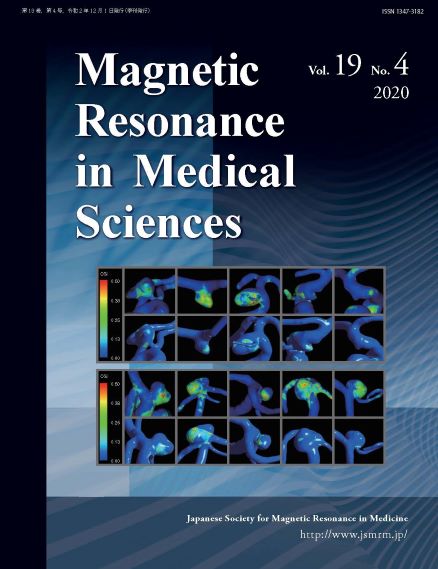19 巻, 4 号
選択された号の論文の14件中1~14を表示しています
- |<
- <
- 1
- >
- >|
Innovative Clinical Images
-
2020 年 19 巻 4 号 p. 287-289
発行日: 2020年
公開日: 2020/12/01
[早期公開] 公開日: 2020/01/17PDF形式でダウンロード (3214K) -
2020 年 19 巻 4 号 p. 290-293
発行日: 2020年
公開日: 2020/12/01
[早期公開] 公開日: 2020/02/13PDF形式でダウンロード (3070K)
Review
-
2020 年 19 巻 4 号 p. 294-309
発行日: 2020年
公開日: 2020/12/01
[早期公開] 公開日: 2019/11/22PDF形式でダウンロード (13622K)
MajorPapers
-
2020 年 19 巻 4 号 p. 310-317
発行日: 2020年
公開日: 2020/12/01
[早期公開] 公開日: 2019/10/15PDF形式でダウンロード (2919K) -
2020 年 19 巻 4 号 p. 318-323
発行日: 2020年
公開日: 2020/12/01
[早期公開] 公開日: 2019/10/24PDF形式でダウンロード (2539K) -
2020 年 19 巻 4 号 p. 324-332
発行日: 2020年
公開日: 2020/12/01
[早期公開] 公開日: 2019/12/27PDF形式でダウンロード (4143K) -
2020 年 19 巻 4 号 p. 333-344
発行日: 2020年
公開日: 2020/12/01
[早期公開] 公開日: 2020/01/17PDF形式でダウンロード (5769K) -
2020 年 19 巻 4 号 p. 345-350
発行日: 2020年
公開日: 2020/12/01
[早期公開] 公開日: 2020/01/17PDF形式でダウンロード (3285K) -
2020 年 19 巻 4 号 p. 351-358
発行日: 2020年
公開日: 2020/12/01
[早期公開] 公開日: 2020/01/22PDF形式でダウンロード (5898K) -
2020 年 19 巻 4 号 p. 359-365
発行日: 2020年
公開日: 2020/12/01
[早期公開] 公開日: 2020/01/31PDF形式でダウンロード (4494K) -
2020 年 19 巻 4 号 p. 366-374
発行日: 2020年
公開日: 2020/12/01
[早期公開] 公開日: 2020/01/31PDF形式でダウンロード (3900K) -
2020 年 19 巻 4 号 p. 375-381
発行日: 2020年
公開日: 2020/12/01
[早期公開] 公開日: 2020/02/06PDF形式でダウンロード (2968K)
Technical Notes
-
2020 年 19 巻 4 号 p. 382-388
発行日: 2020年
公開日: 2020/12/01
[早期公開] 公開日: 2019/10/24PDF形式でダウンロード (2977K) -
2020 年 19 巻 4 号 p. 389-393
発行日: 2020年
公開日: 2020/12/01
[早期公開] 公開日: 2020/02/13PDF形式でダウンロード (3031K)
- |<
- <
- 1
- >
- >|
